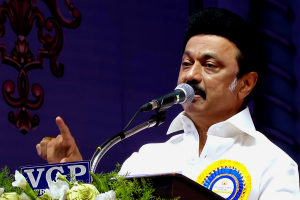India’s food security challenge is no longer just about rising food prices. It encompasses the very availability and accessibility of nutritious food for the most vulnerable segments of the population. Despite being an agricultural powerhouse, the country faces a paradox where increasing food production has not translated into better nutrition for its citizens. This crisis demands a deeper analysis beyond economic metrics and price indices, focusing on the structural issues that perpetuate under-nutrition and threaten future food supplies. One of the core issues stems from the legacy of the Green Revolution, which emphasised the mass production of cereals like rice and wheat.
While this helped India achieve food self-sufficiency, it also skewed the country’s dietary patterns. The Public Distribution System (PDS), which distributes these staple grains to the poor, overlooks the importance of a balanced diet. As a result, essential nutrients from pulses, fruits, and vegetables remain out of reach for many low-income households. This nutritional imbalance is a significant factor behind India’s persistent malnutrition rates, which are among the highest in the world. Recent data paints a grim picture. The Global Hunger Index ranked India 111th out of 125 countries in 2023, indicating a worsening situation. Despite incremental improvements in some areas, such as the reduction of stunting and wasting among children, progress has been painfully slow.
Advertisement
If this trend continues, it could take decades to bring nutrition to acceptable levels. Moreover, the rise in anaemia among children and women further underscores the depth of the nutritional crisis. Compounding these issues is the growing impact of climate change on India’s agricultural sector. Extreme weather events, such as droughts and floods, have already started affecting crop yields, particularly for wheat and rice. The recent decline in rice production, coupled with the government’s decision to ban non-Basmati rice exports, highlights the fragility of India’s food supply.
While this move was aimed at stabilising domestic prices, it has had far-reaching consequences for global food markets, especially in African countries that rely on Indian rice imports. Looking ahead, the situation could worsen. India’s population is projected to continue growing, reaching over 1.7 billion by 2050. To meet the rising demand, the country must either significantly increase agricultural productivity or expand its cultivated areas. However, both options face considerable challenges.
The degradation of arable land due to erosion and salinisation, along with depleting water resources, are major obstacles to sustainable agricultural growth. India’s food security crisis is rooted in structural inequalities, inadequate nutritional policies, and environmental challenges. Addressing this crisis requires a multifaceted approach that prioritises both the quantity and quality of food, ensures equitable access, and builds resilience against climate change. Without urgent and sustained efforts, the country risks not only exacerbating under-nutrition but also jeopardising its future food security











